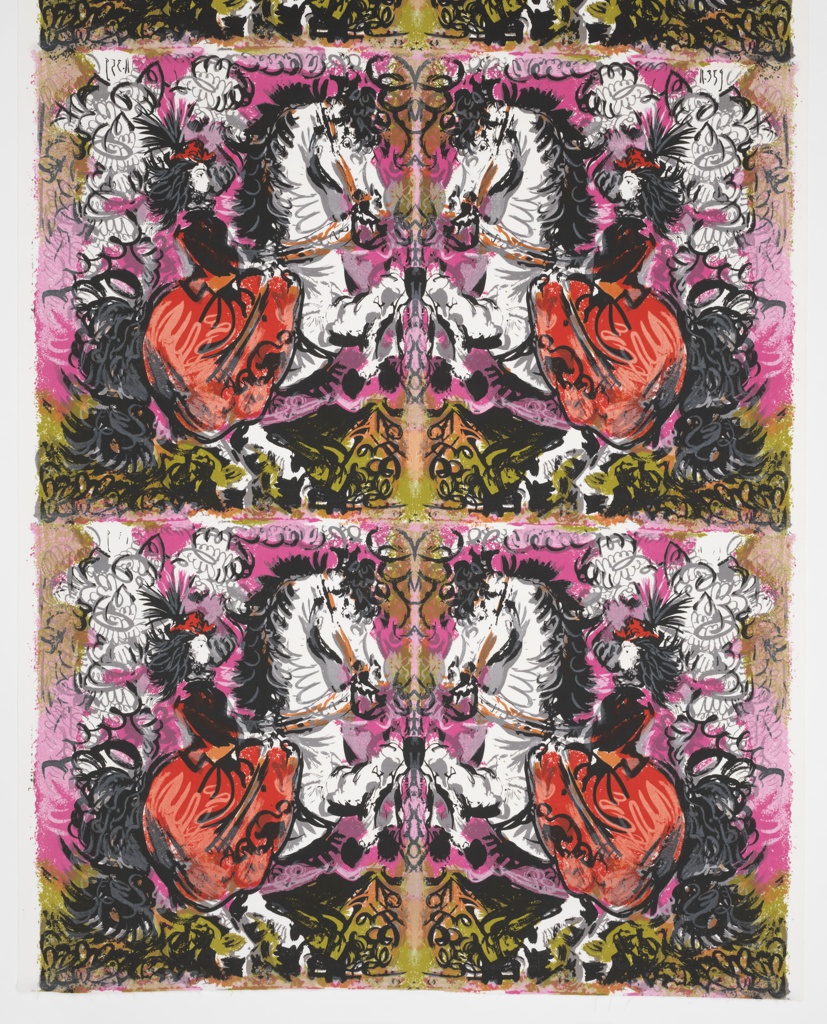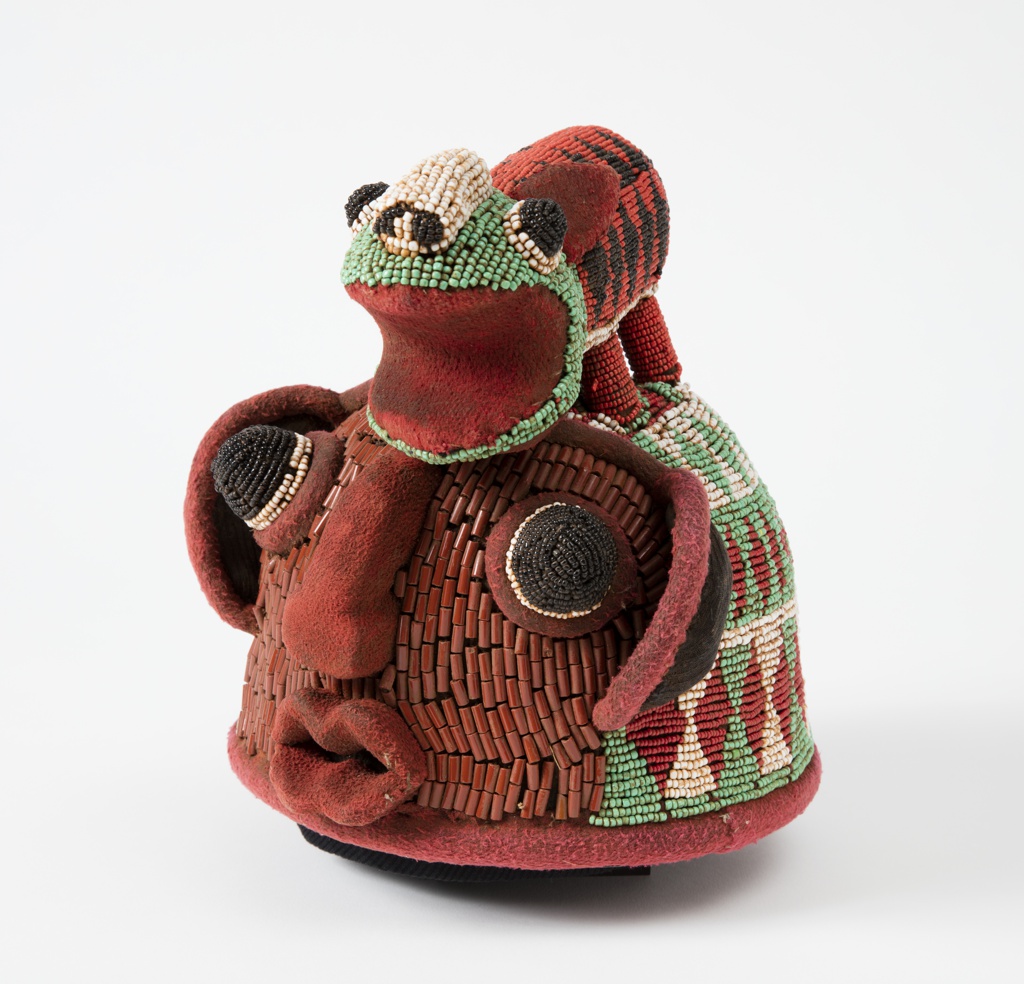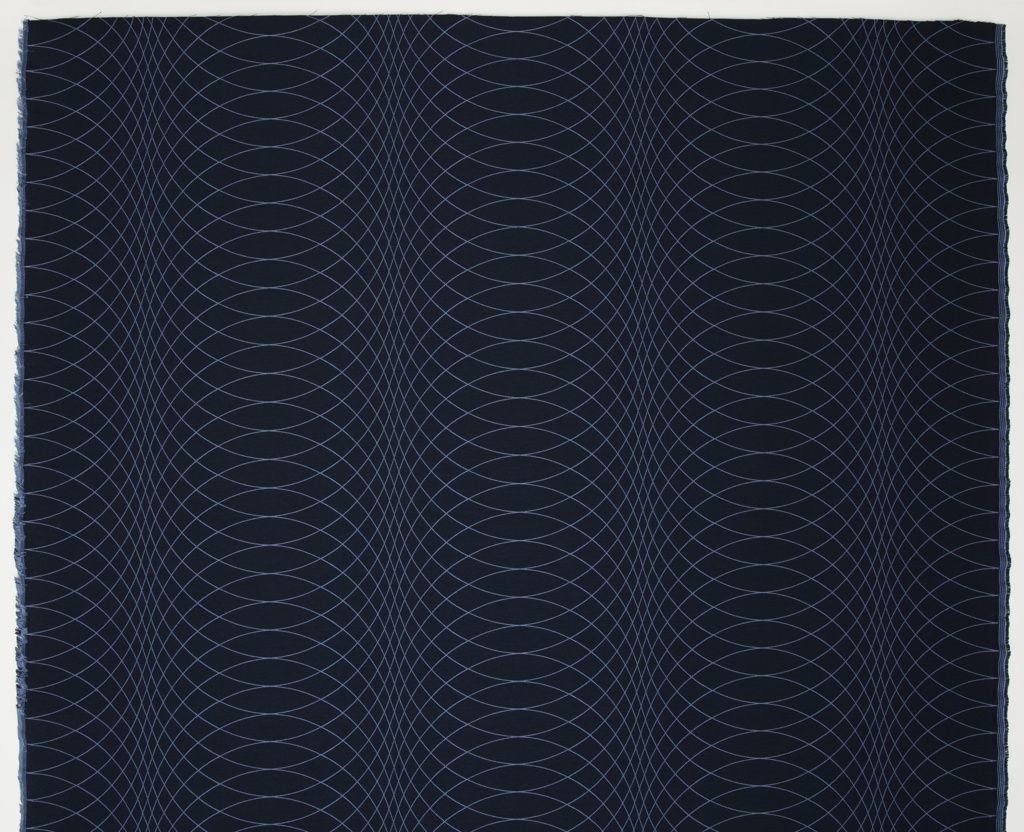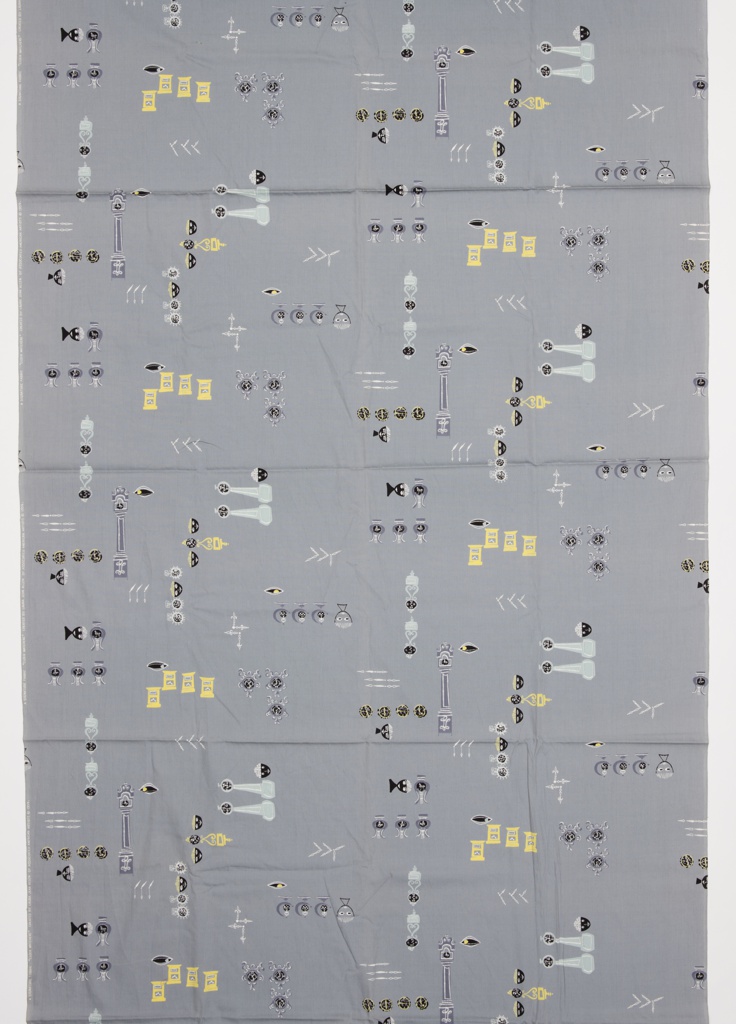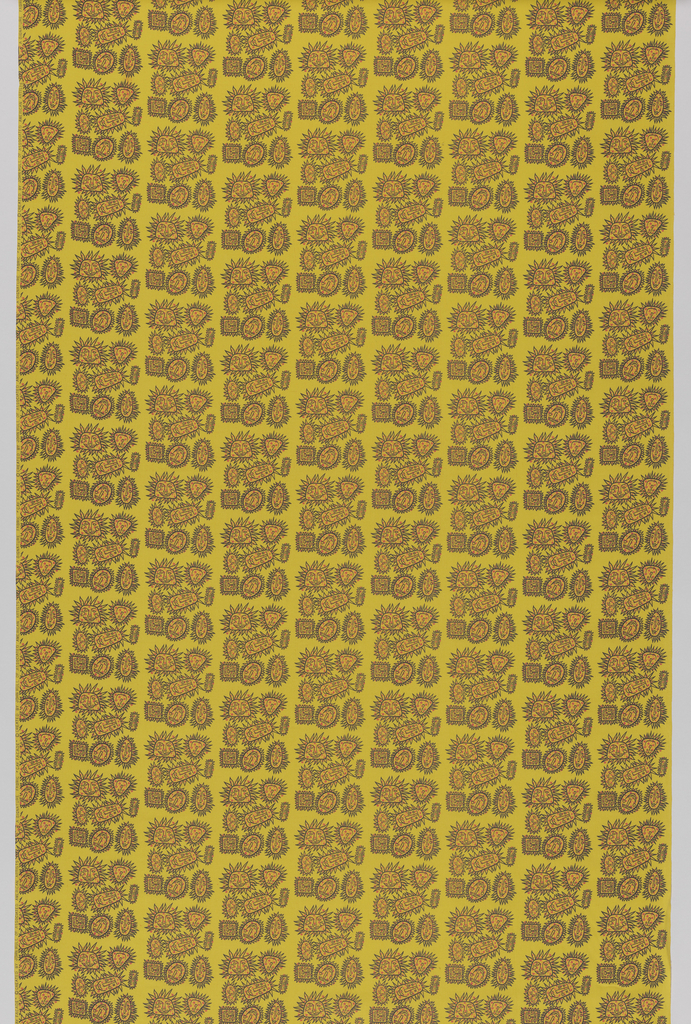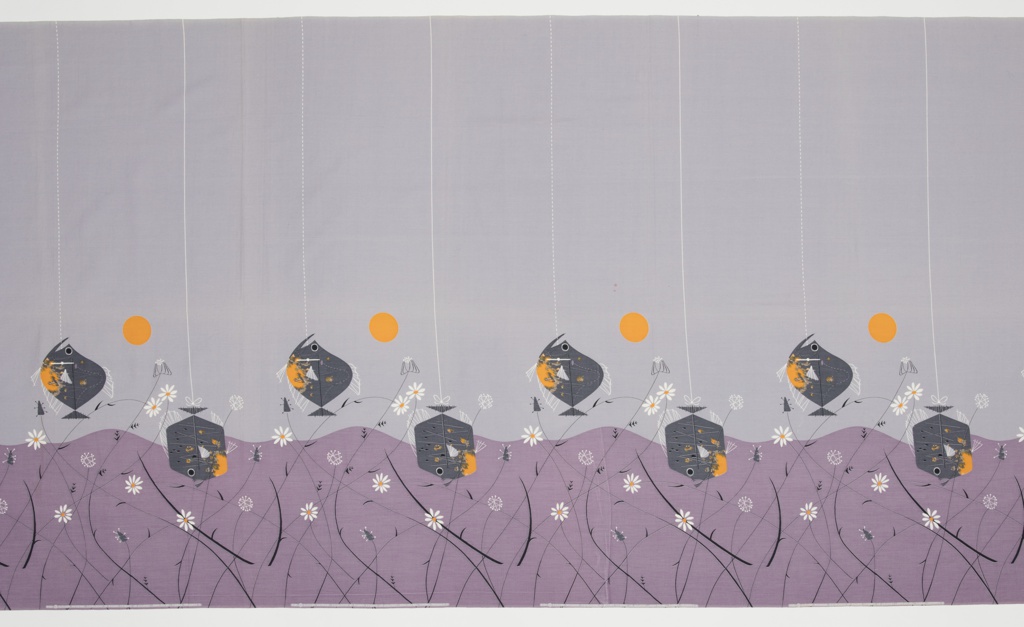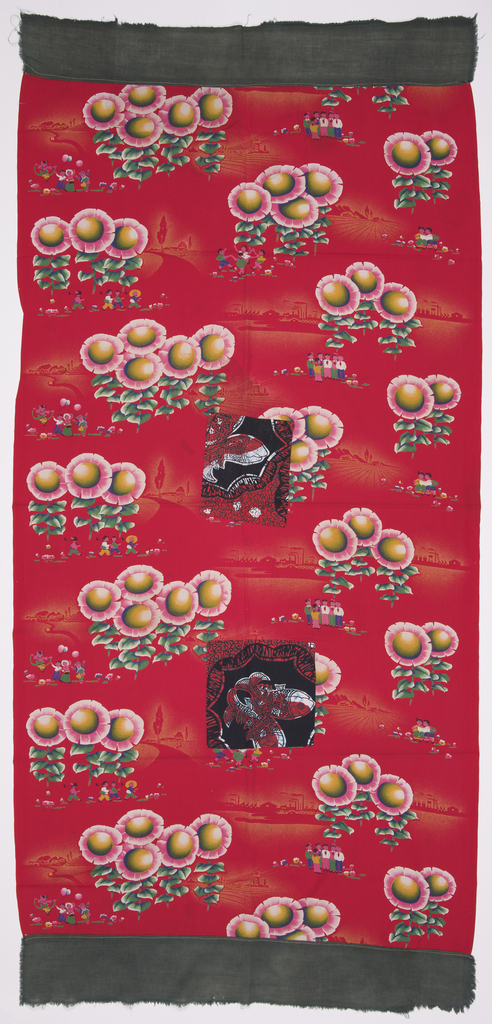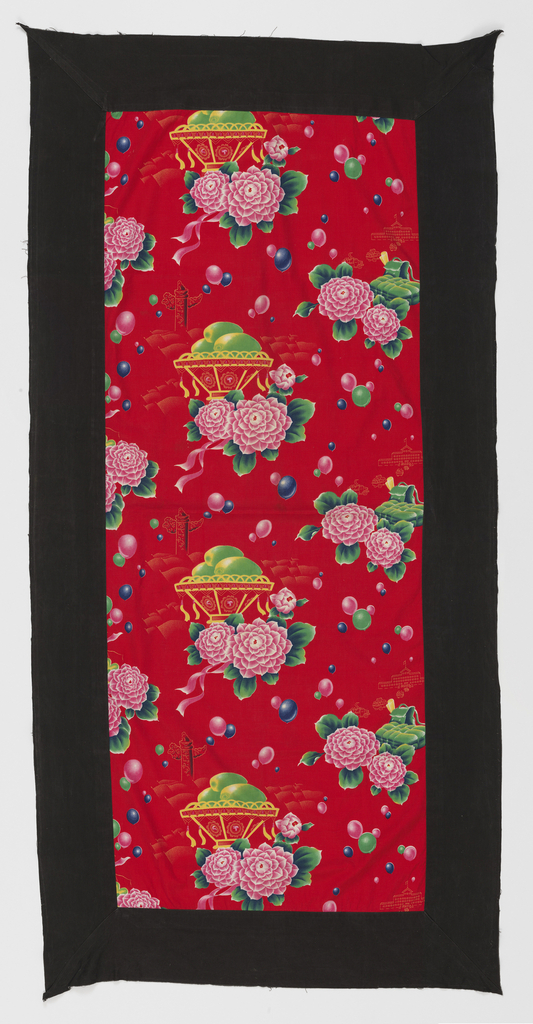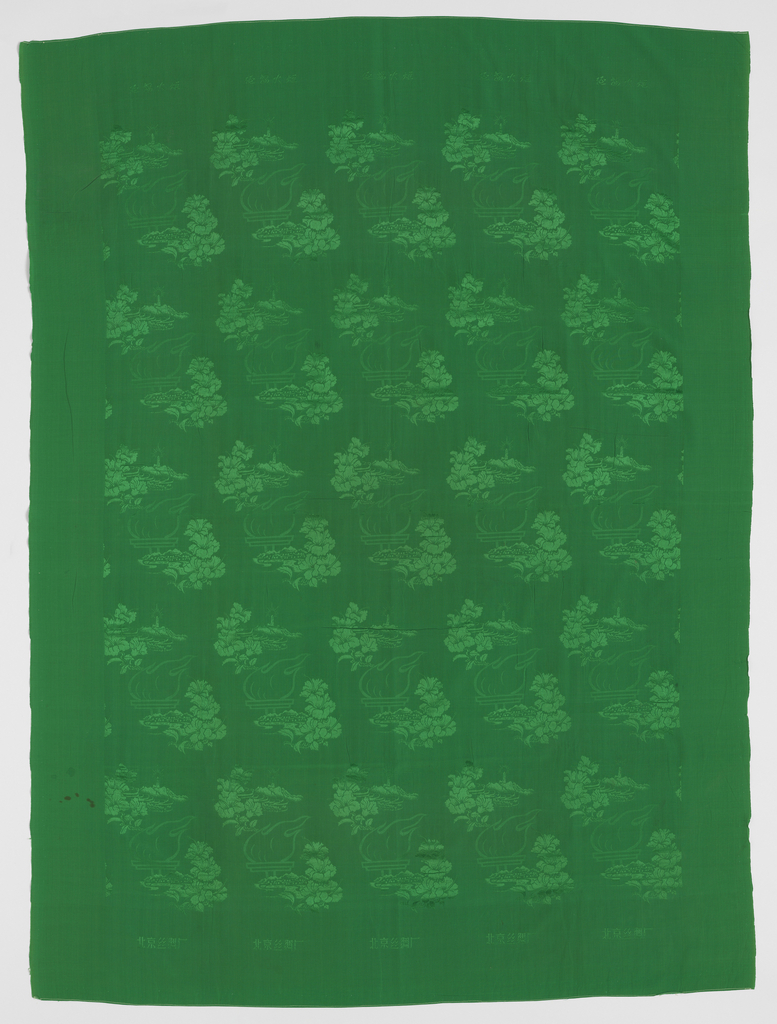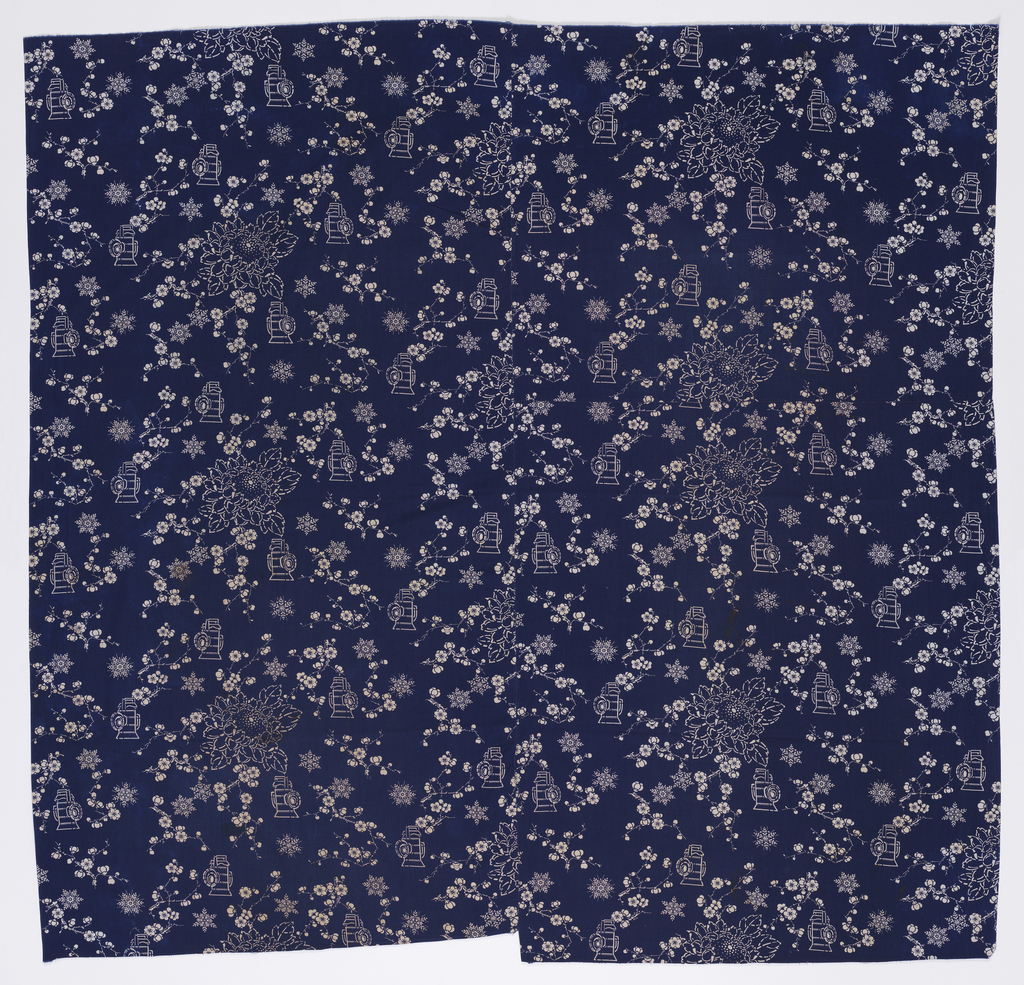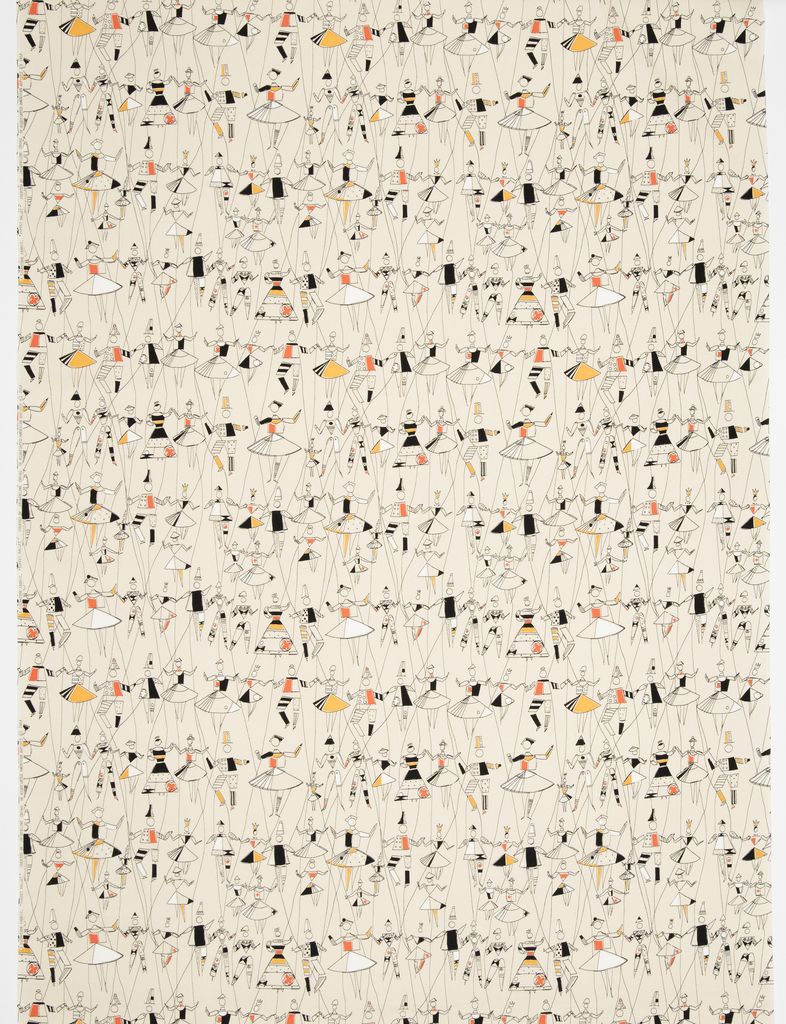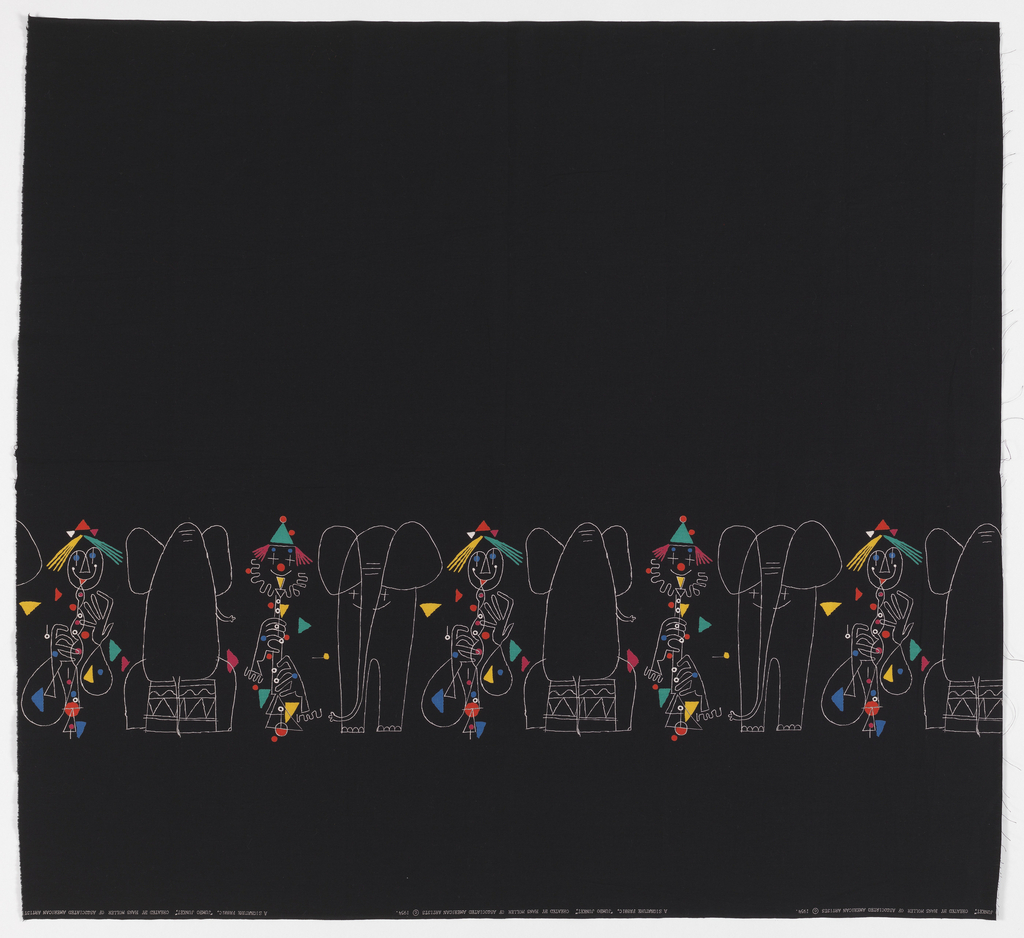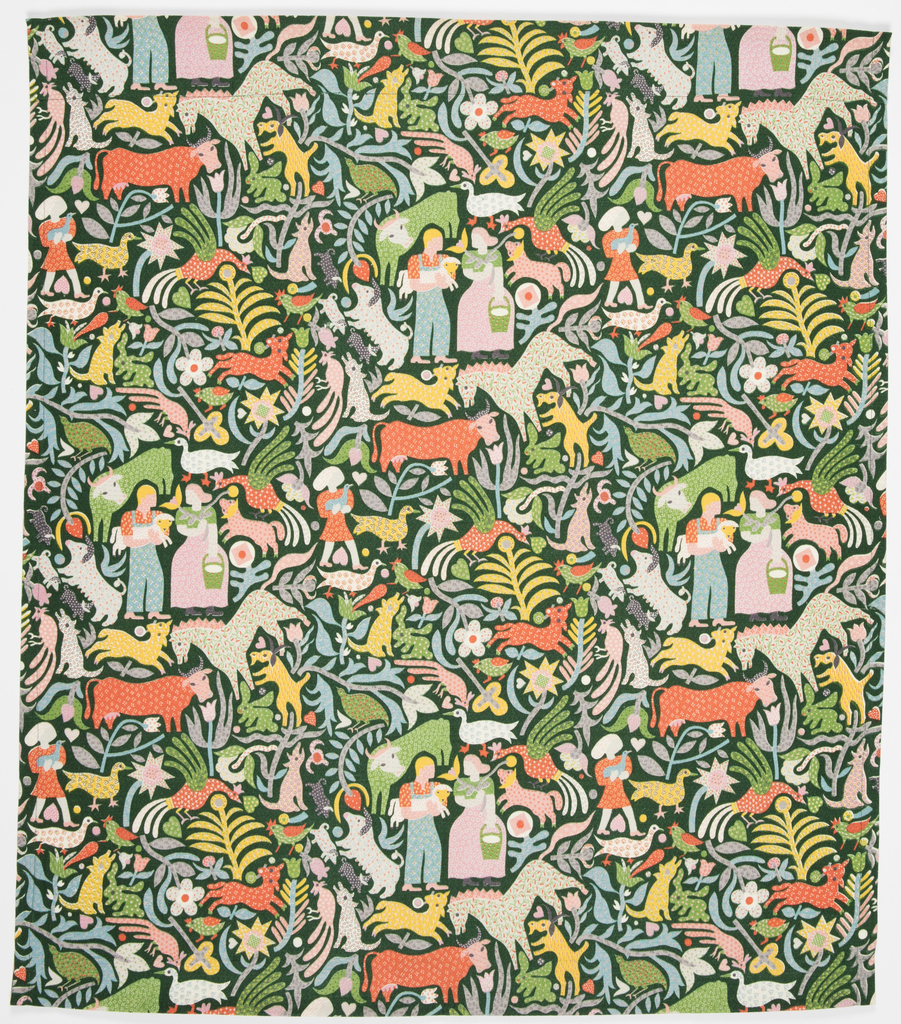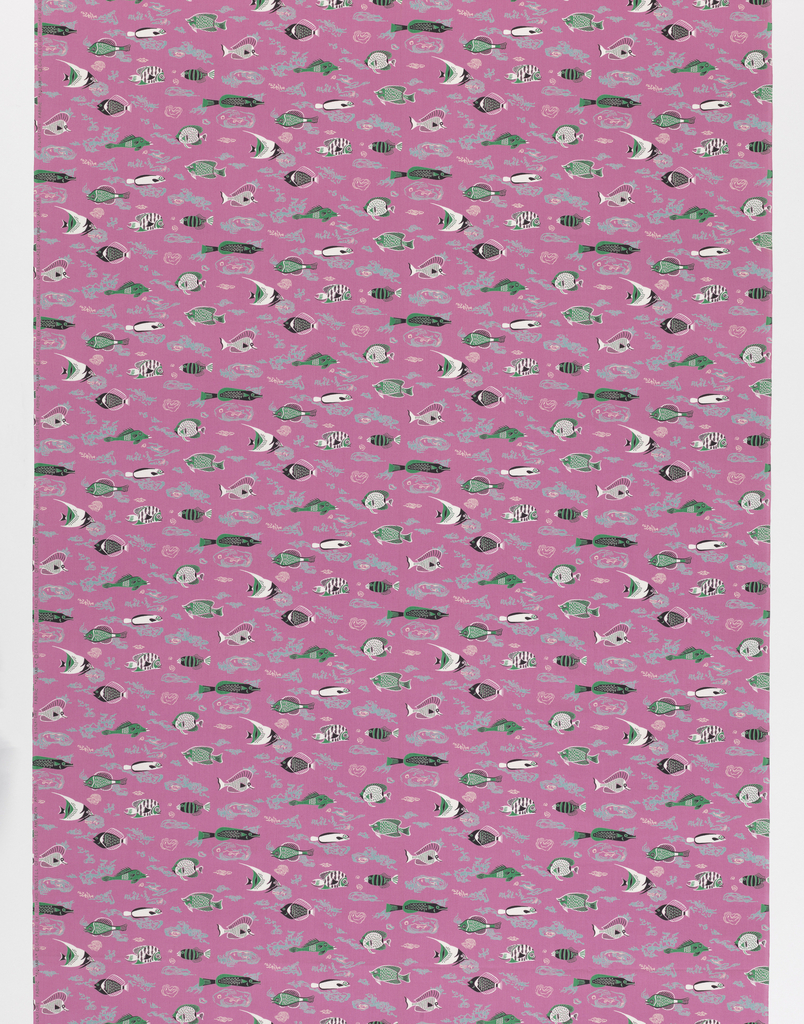Bloomcraft Fabrics, a New York-based producer of woven textiles that collaborated with artists ranging from Rockwell Kent to Gloria Vanderbilt, released the Picasso Collection in 1963. As announced by an advertisement in American Fabrics: “This unusual collection links the work of the world’s greatest living painter and the world of interior design through a series...
The Bamileke people are the dominant group inhabiting the southern part of the Cameroon Grasslands, where raffia, oil palms, and banana trees are plentiful. The Bamileke are organized into chiefdoms, each headed by an absolute ruler, or fon. The fon has an eight-member advisory council made up of descendants of the kingdom’s founders. Traditionally, he...
Among Sir Paul Smith’s upholstery fabrics for Maharam, the dominant motifs are bolder and quirkier versions of classic menswear patterns such as stripes, plaid, herringbone, and houndstooth check. In a significant departure, the designer has based his latest on an iconic architectural feature. Named for the central London street address of the flagship Paul Smith...
Laura Jean Allen rose to fame by the time she was 30 as an illustrator for Seventeen magazine and designer of clothing and cosmetic compacts for teenaged girls. She became involved with Associated American Artists in the early 1950s and was soon one of the group’s most prolific textile designers. Upon the 1954 release of...
Gay Façade, a textile design featuring whimsical line drawings of geometrically shaped suns with smiling faces, was designed by John Hull for Associated American Artists. It was produced in multiple colorways, another of which (1994-38-8) is currently in the museum’s collection. In this version, suns are outlined in black and partially filled by red and...
Behold how black skimmers fish for their finny food. As the tide falls and the moon rises, a squadron of skimmers shimmers over the glassy cove, shallow-plowing the shallows with their razor-thin lower mandibles, scooping up minnows by the many from the mini furrows. It’s a little like seeing with a string, and you have...
The Young Pioneers of China, founded in 1949 as a Communist group for children aged six to fourteen, flies a red flag with a triangular cutout on its right edge. The group’s Constitution stipulates that members wear red scarves knotted around their necks to correspond with the flag’s missing section. This quilt cover depicts children...
This quilt cover features a tasseled basket containing three yellow-green mangoes that refer to the mangoes that Mao Zedong (1893-1976) gave to workers. As leader of China’s Communist Party, Mao received a basket of mangoes as a gift from the visiting Pakistani foreign minister in August 1968. Mao re-gifted the non-native delicacies to a group...
In 1934, after seven years of civil war between China’s Nationalist and Communist parties, the latter was nearing defeat. Nationalist forces had repeatedly encircled Communist headquarters, and the recently elected Mao Zedong had been removed from his position as chairman. Under new leadership, the waning Communist army broke through its enemy’s fortifications in secret. Thus...
This cotton quilt cover is based on The Legend of the Red Lantern, one of the Eight Model plays promoted during the Cultural Revolution in China, as they promoted the ideals of communism. (By the end of the Cultural Revolution, there were 18 approved plays and ballets.) The plot of The Legend of the Red...
Jacqueline Groag was one of the United Kingdom’s most influential post-war textile designers. She began her career at the famed Wiener Werkstätte in Vienna before designing and producing hand-printed textiles for some of the top Parisian fashion houses, including Chanel, Lanvin, Worth, Schiaparelli, and Poiret. She was also one of only a few of the...
Hans Moller, the German-born abstractionist known as a colorist, brought his predilection for vivid hues to his textile designs. His work was part of an assortment of imaginative midcentury designs produced by M. Lowenstein & Sons in partnership with Associated American Artists, a collective dedicated to creating accessible art. In Jumbo Junket, Moller’s circus-themed border...
In 2005, The New York Times reported that expressionist artist Vincent Malta, age 83, was beginning to achieve success in making a living as an artist.(1) A longtime teacher at the Art Students League of New York whose paintings appeared in galleries from time to time, Malta filled the gaps in his showing career by...
The issue of The New Yorker dated August 19, 1944 had a curiously wholesome cover. A farmer, holding a lamb, and his wife, armed with a bucket, were surrounded by farm animals and flowers. They were faceless and a bit flat, but expressive nonetheless, with the appearance of having been cut from bright calico cottons...
Painter and commercial illustrator Richard Munsell began creating advertising artwork for Maxwell House in the 1940s. His ads, the best known of which depicts coffee time at a living-room sewing bee, appeared within a series entitled “Part of the American Scene.” He also designed textiles that appealed to the American experience: lazy summer days spent...
